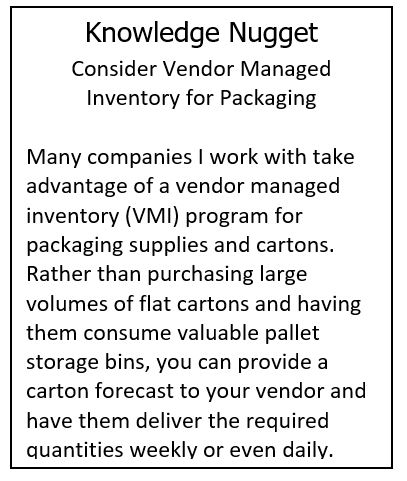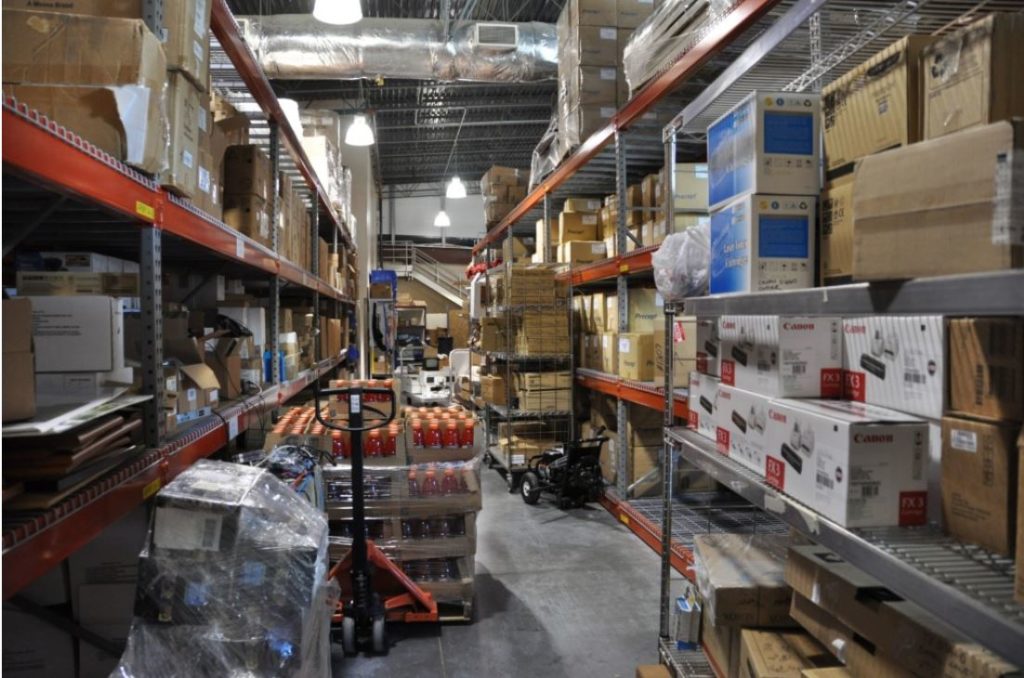You can randomly look around for inventory that appears to have been around for a while. If the inventory has excess dust on the boxes chances are it has been there too long. Alternatively, if you plan to come back to the warehouse you can mark one of the cases then when you return (maybe a month or two later) you can easily see if the marked case is still in stock and if it has even moved.

If your facility is squeezed for space, don’t overlook the obvious. There are many reasons for keeping excess inventory (customer satisfaction, having complete product lines, lead time uncertainty, etc.), but these reasons should be compared to the cost storing these items. Housing excess or obsolete inventory results in poor utilization of your space and can be a costly mistake. The first step to removing excess inventory is to calculate the economic amount of inventory you should have on-hand. Then, compare this amount to the actual inventory on-hand. The difference is the amount of potential excess inventory that can be removed. By properly managing your inventory, you can remove excess items and reallocate the space for fast-moving and high-volume products. When calculating the financial burden of excess inventory, it may help to get someone from finance or accounting involved to assess the carrying cost impact. Carrying cost is often an overlooked cost factor but can be an additional expense ranging from 15-40% of the average inventory value.
The same principle applies to reviewing non-stock inventory. For example, are holiday decorations consuming storage space? Why? What about office supplies? Why are those old computer CRT screens taking up pallet storage bins? And look at the packing cartons used for shipping? Why are they even there…can you setup daily deliveries from your carton supplier to free up this space?
